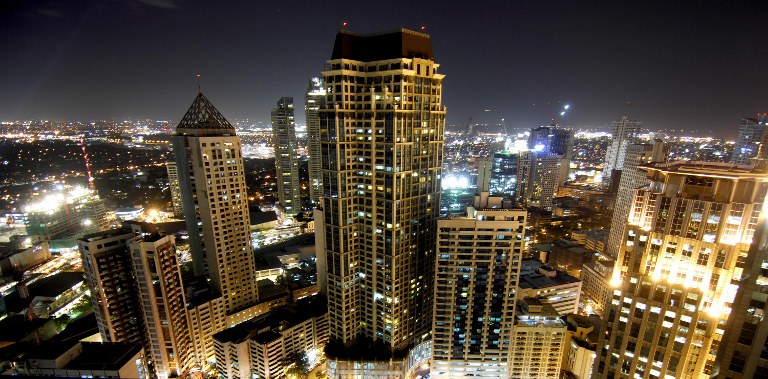SUMMARY
This is AI generated summarization, which may have errors. For context, always refer to the full article.

MANILA, Philippines – The Philippines is hot and it’s not because its a tropical country.
At the Philippine Investment Forum on March 12, British American Tobacco Philippines General Manager James Lafferty said with “white space” in the United States and Europe running out, Africa and the tropics become the most viable location for future investments and expansion for multinationals.
In these regions, Lafferty said the Philippines stands out. He said surveys done in 2012 naming the Philippines one of the top 10 markets globally by 2050, became a major eye-opener for multinational companies. It became apparent that it would be to the advantage of multinationals to come to the country and invest for the long haul.
In 2012, one of these studies included the one done by HSBC which stated that the Philippines would be the 16th largest economy worldwide while the Wealth Report 2012 stated that the country would be one of the 10 fastest growing economies in the world.
Lafferty said because of these studies, the Philippines is now attracting multinationals based in the Asia and the Pacific region, the United States, and Europe. These firms are not only looking at services as a potential investment area but manufacturing.
“[Those reports] woke many, many companies up and say, ‘For a long-term play, you have to be here and you have to be serious.’ That was one of the best moves that came up for the Philippines because the easy white space expansion, things that drove the DOW in the ’80s and ’90s, those are gone,” Lafferty said.
“The Philippines is very hot, top 10 in 2050 and multinationals running out of white space.”
ECPI Group Chief Executive Officer Paolo Sardi, in the same forum, agreed with Lafferty. He added that the current administration’s focus on good governance, transparency, and integrity, make the Philippines one of the “most interesting” countries in the region.
Sardi said most companies are looking at sustainable investments and the Philippines is in the best position to attract these. He said that around $13 trillion or 22% of global assets are directed at sustainable investment strategies globally.
If the country is able to tap into these funds, Sardi said it will also increase the country’s Foreign Direct Investments (FDIs). Currently, the Philippines’ FDIs grows at below 20% per year, the lowest in Southeast Asia.
“I think the Philippines has a great potential in terms of attracting them, foreign capitals, not only the stock market, that already happened, about 50% of the investors are foreign investors in the Philippine stock exchange, but also the industry, manufacturing,” Sardi said.

Fierce competition
Lafferty said if multinationals would indeed venture in the Philippines, it would’t be a walk in the park. He said multinationals here are neck and neck with big local players who have a sizeable share of the market.
He said the Philippines is the number one in terms of having the most difficult market to get into. Lafferty said even a giant like Colgate is challenged by Lamoiyan, a local toothpaste manufacturer that produces the toothpaste brand Happee, while in the diapers segment, local company EQ is giving Proctor & Gamble’s Pampers a run for its money.
Lafferty said that even in tobacco products, local brand Fortune, lords it over in the Philippines. Multinational brands like Philip Morris or Marlboro are often no match in certain areas like Mindanao.
“In every market you go to, there are little big players. If its detergent, toothpaste, or diapers, there [are] local players. The most difficult market [is one where] multinationals fight local players because the local players are so good, it’s not even close. the Philippines is number one. It’s absolutely number one. The ability of this country to develop entrepreneurs (is impressive),” he added.
Lafferty heads cigarette maker BAT, which will proceed with its 5-year $200 million investment in the Philippines after the sin tax reform law, which increases the overall excise tax slapped on cigarettes and alcohol products, was signed into law.
Lafferty had said they supported the passing of the reform law to “level the playing field.”
Imperial Manila
However, Lafferty said the only problem with the current set up in the Philippines is that all the major multinational activity is focused in Metro Mania and the Greater Manila Area (GMA) region.
If the country is serious in positioning itself as a business investment destination, the government must invest in other areas in the Visayas and Mindanao. This would also help in achieving trickle down effects of high economic growth.
“The only real issue for me is that it’s Manila-based and the country is hugely geographically dispersed in population. What I think the government should do more is they gotta make more investment outside of Manila. It’s all Manila, everything’s in Manila,” Lafferty said. – Rappler.com
Add a comment
How does this make you feel?
There are no comments yet. Add your comment to start the conversation.